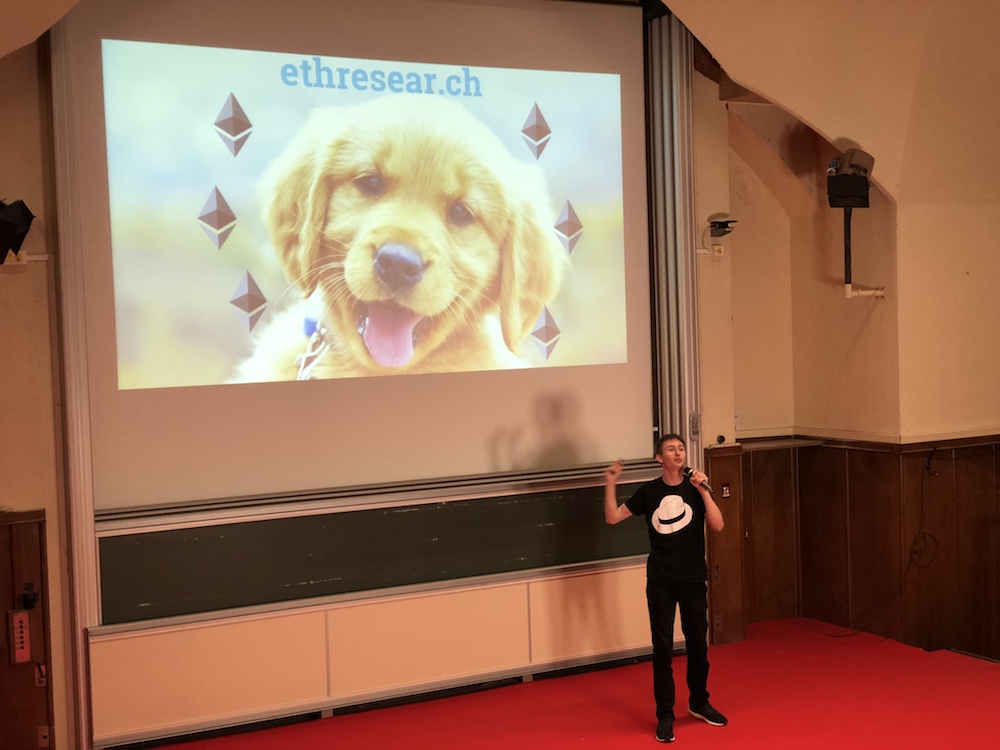From Paris with scaling
The conference called EthCC lasted for 3 days and was held in beautiful but rainy Paris during the second week of March, where over 800 people joined to exchange ideas that will shape the future of Ethereum. The conference was huge.

The conference called EthCC lasted for 3 days and was held in beautiful but rainy Paris during the second week of March, where over 800 people joined to exchange ideas that will shape the future of Ethereum. The conference was huge: there were four big amphitheaters along with a room for workshops, with multiple talks going on simultaneously. The speakers were leading experts in their fields, so my colleagues and I decided to split up in order to cover as many talks as possible.
There were too many talks to cover them all, but most of them fit into one of the following categories: scalability, governance, token design, showcasing new dApps and development tools. However, there were a few outliers – for example, a few of the very first talks outlined the Ethereum community perfectly. While Bob Summerwill was talking about ending tribalism in Ethereum and spreading the love, in the adjacent amphitheater there was Rick Dudley listing all the things he hates about Ethereum (and boy was it a big list). People loved both presentations, which demonstrates one of the greatest things about the Ethereum community – how open the people are to criticism.
Immediately after the introductory talks, the speakers dived directly into one of the biggest problem in the entire blockchain industry – the scaling issue. Many of the Ethereum core developers presented their latest research and gave the audience a lot to think about. Vitalik talked about Plasma Cash, a concept that was introduced only a few days before the conference. This new concept gives Plasma chain tokens their unique IDs, which relieves the users from having to monitor any coins on the Plasma chain beside their own. Karl Floersch and David Knott also gave talks on Plasma and sharding, going over these concepts in a very beginner-friendly manner and extending the idea of Plasma Cash which Vitalik had introduced. Vlad Zamfir talked about Casper, which was probably the longest and the most detailed talk he ever gave on that subject. He still had the energy to talk about governance on Ethereum the next day nonetheless.
Although majority of presentations were highly technical, a healthy amount of fun and humor wasn’t lacking. The team from SpankChain was there to present scalable spanking with their state channel implementations and a brand new PoS (Proof of Spank). Although a fun talk, their implementation of counterfactual state channel was really innovative. The idea behind it is that a contract that resolves the conflict between parties doesn’t even have to exist on chain as long as you could deploy it in the case you needed it.
At the end of the talks about scaling, there was a call to action inviting people to join the research and help Ethereum.

Beside scaling, there was a lot of talk about on-chain governance and token engineering. Incentivization and developing apps in a fully decentralized manner is still a big issue in the Ethereum ecosystem that needs to be solved. Several talks including Vlad Zamfir’s discussed different models of governance. Different implementations of token markets and registries are getting more popular, with quite a few talks focusing on TCR (Token Curated Registries), which represents a mechanism for the community to review and curate which token will become a part of their system.
During the lunchtime on the last day of the conference, an informal game development meetup was held, where teams working on Ethereum-based games had an opportunity to exchange their experiences and common issues. Scaling, transaction costs and better onboarding for new people in the blockchain world were the most often discussed topics. Although a lot of work remains to be done, the future of games on Ethereum looks bright to us.
One of the truly original talks was about feeding birds through Ethereum and making Plantoids – physical plants hooked to a smart contract which gets funded in order to pay someone to make them offspring. Watching the plant dance when you send it a tip was exhilarating and the idea of real-world interactions with the blockchain in general is something that quite a few people seem to be working on at the moment.

Of course, after all the presentation and endless technical discussions were done, a party was thrown with good wine, cheese and some casual chit-chat that fit in well with a 3D Ethereum logo that was glowing over our heads. In retrospect, this was an amazing conference, especially for us developers. There was zero talk about price and speculation, with everyone focused on the technology and the future of Ethereum. The talks about Plasma, sharding, state channels and other improvements not only explained the concepts in detail, but have also inspired us to dive into the scaling research ourselves. We left Paris in awareness that there was no reason for us to wait for others in hope that they will solve the scaling problem. In other words, the most important take away was that there is no us and them in Ethereum – the community as a whole must work together to improve on the underlying protocol. By sharing what we have learned we can empower others to go even further.
